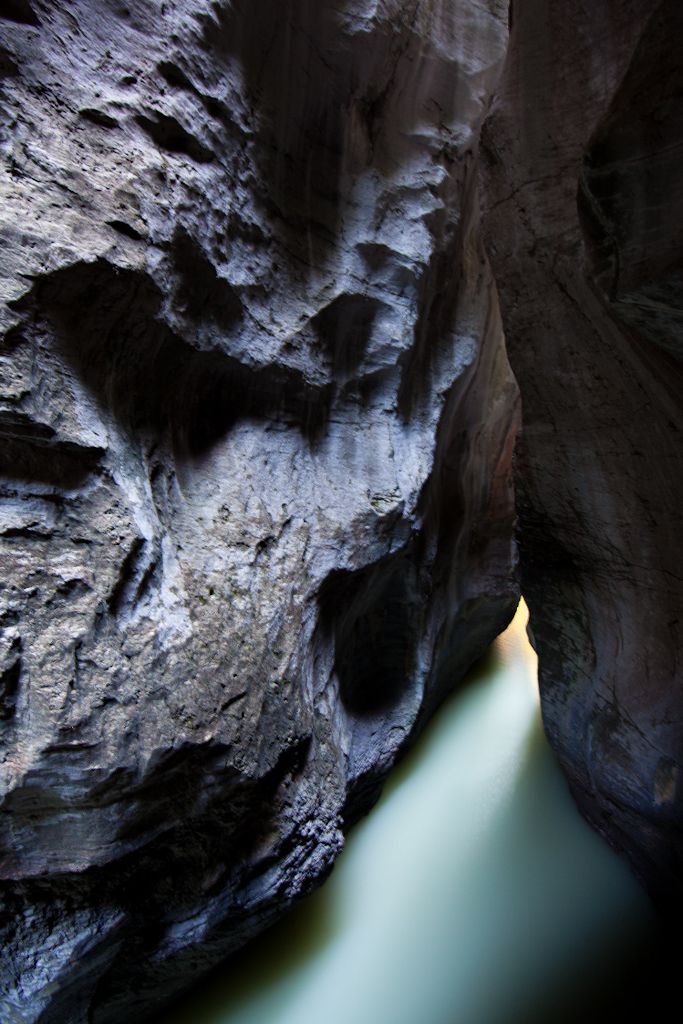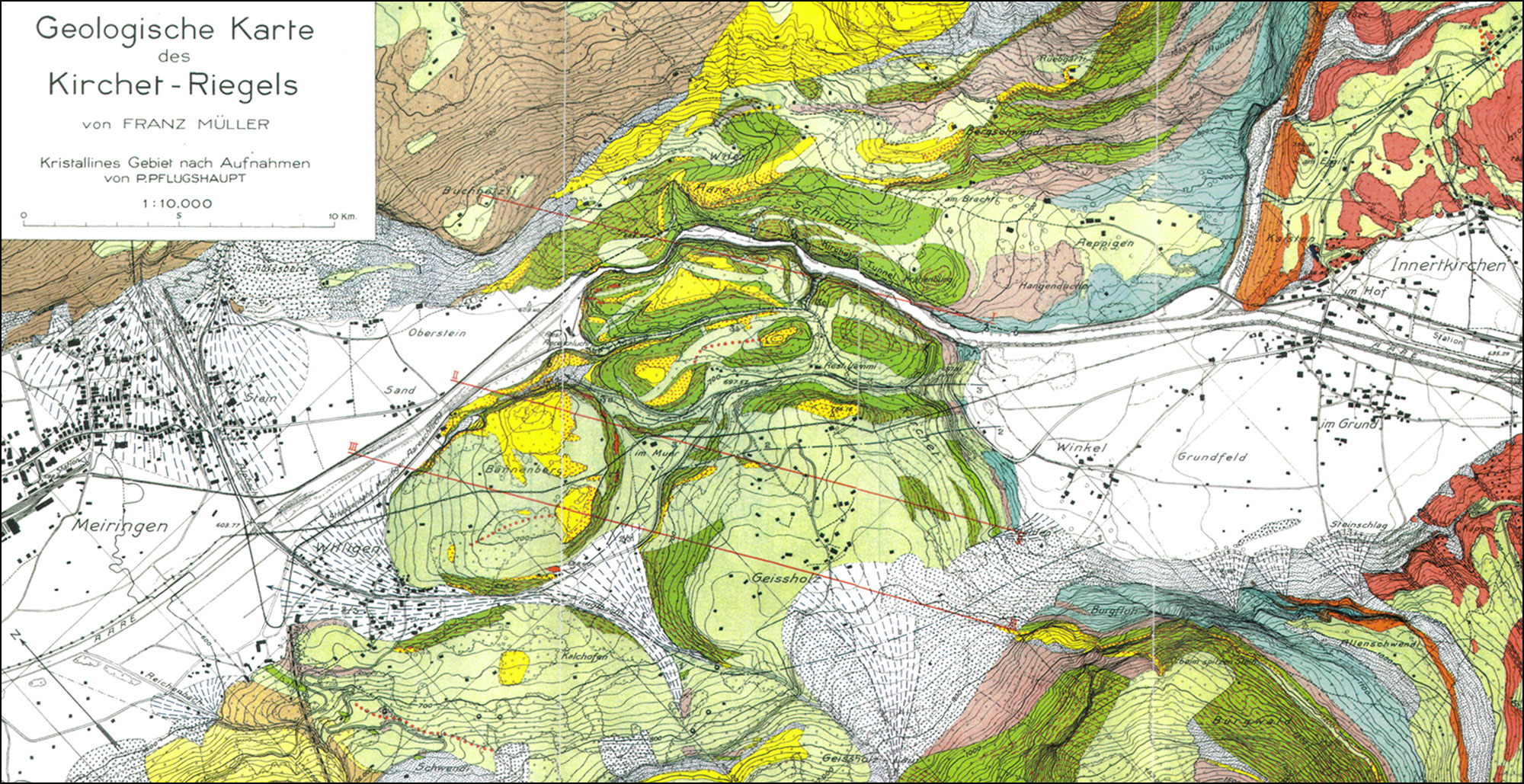Geology
The rock formation between Meiringen and Innertkirchen, called the ‘Kirchet’, consists primarily of hard limestone. This rock was first formed during the Cretaceous Period around 130–60 million years ago as marine sediment, which hardened into limestone over time (sediment in the geosynclinal Alpine Tethys Ocean).
When the Swiss Alps formed around 15 million years ago, these layers of sediment were arched up to form the sediment mantel of the crystalline mountains, but the rock around the Kirchet is ‘autochthon’, meaning that it barely moved or folded. The limestone here is therefore less rugged and cracked, making it fairly resistant to ice and water erosion. The glaciers of the ice ages, which began around 1–2 million years ago, probably ground down the rock of the ‘Kirchet’ but they didn’t wear it away.
In the first warm interglacial period, as the glaciers receded, the water eroded a gorge through the rock. In the cold period that followed, the glacier advanced once again to cover the ‘Kirchet’. This filled the gorge with moraine. When the glaciers receded again in the next warm period, the meltwater didn’t flush the moraine material out of the old gorge, but instead eroded a new gorge into the rock. This meant that a new ‘Aare Gorge’ was formed in every interglacial period. According to detailed observations by Franz Müller, there are five earlier gorges, in addition to the one we know today, that are completely or partially filled with moraine. The ‘Lautere Schlauche’ (the ‘noisy gorge’), which begins at the car park of the Meiringen entrance to the Aare Gorge and runs more or less parallel to the modern Aare Gorge, is a good example of this. However, it has not been possible to date the formation of the individual gorges or to assign them to the different ice ages (Hantke, 1980).

 Accept
Accept






